Aponogeton ulvaceus
Scientific name: Aponogeton ulvaceus
Family: Aponogetonaceae
Maximum size reached under cultivation: 30 - 50 cm (11.81 - 19.69 inch)
014
Recommended pH range: 6.8 - 7.7
Recommended water hardness: 4 - 12°dGH (71.43 - 214.29ppm)
0°C 32°F30°C 86°F
Recommended temperature range: 22 - 25 °C (71.6 - 77°F)
Preferred propagation method: Seeds
Native to: Madagascar
Growth rate: Fast
Recommended substrate: Fine gravel
Lighting requirements: Medium
Ideal placement in tank: Midground
🏷️ Common Names
- Madagascar Lace Plant (often confused with Aponogeton madagascariensis)
- Ulvaceous Aponogeton
🌍 Origin
Aponogeton ulvaceus originates from Madagascar, where it thrives in slow-moving rivers, lakes, and seasonal ponds. Seasonal water level changes influence its lifecycle, alternating between growth and dormancy. It prefers nutrient-rich, soft waters and grows best in tropical, biodiverse habitats.
📈 Growing Conditions
This is a fully aquatic species that grows best when completely submerged. It is ideal for the midground or background of planted aquariums, reaching heights of 30–50 cm (11.81–19.69 inches). Ideal parameters include a pH of 6.8–7.7, water hardness of 4–12 dGH, and temperatures between 22–25 °C (71.6–77 °F).
Use fine gravel substrate to anchor its bulbous tuber securely. Supplement with iron- and potassium-rich fertilizers. CO2 is optional but enhances coloration and vigor.
💡 Lighting Requirements
Moderate lighting (8–10 hours daily) is optimal. Intense light may lead to algae on its broad leaves, while insufficient light causes weak, spindly growth. Aim for balance to promote healthy development without triggering algae blooms.
📍 Planting Area
With its long, soft leaves, Aponogeton ulvaceus thrives in the midground or background. It provides a dynamic, flowing look and creates contrast when paired with compact or carpeting plants. Ideal for large aquariums and biotope-style layouts.
🌱 Propagation
This species reproduces via seeds and tuber division:
- 🌼 Seed Propagation: In aquariums, flowers may appear and develop seeds after pollination. Use a brush for manual pollination. Germinate collected seeds in moist substrate.
- 🧅 Tuber Division: When mature, the tuber may form offshoots. Gently divide and replant these to propagate new plants.
During the dormant phase, leaves may shed. Leave the tuber undisturbed—new growth typically follows within a few weeks.
⚙️ Difficulty Level
Moderate. Though generally easy to care for, its fast growth, occasional dormancy, and delicate leaves demand thoughtful handling. Maintain stable parameters, prune old leaves, and avoid overcrowding for best results.
📝 Short Description
Aponogeton ulvaceus is a highly decorative plant with ruffled, translucent green leaves that move gently in water flow. Fast-growing and nutrient-hungry, it quickly becomes a visual highlight in freshwater tanks. Suitable for aquascapes and natural biotope designs, it may bloom if space and care allow. Delicate but rewarding.
Its elegant form and utility for providing shelter for fish and shrimp make it a top choice among aquarists seeking structure, motion, and biological value in planted tanks.

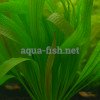 Aponogeton bovianus
Aponogeton bovianus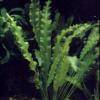 Aponogeton crispus
Aponogeton crispus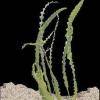 Aponogeton longiplumulosus
Aponogeton longiplumulosus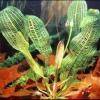 Aponogeton madagascariensis
Aponogeton madagascariensis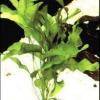 Aponogeton natans
Aponogeton natans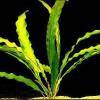 Aponogeton rigidifolius
Aponogeton rigidifolius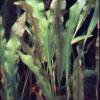 Aponogeton undulatus
Aponogeton undulatus